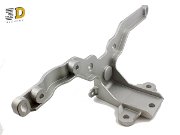Checking your .STL file for 3D Printing.
Posted on Dec 05, 2013
Before sending your 3D Design to us for a quote or for printing it's well worth reviewing using a .stl viewer first. This will ensure that your file is as you intend and will avoid potential surprises or delays later in the process.
Checking your .stl file in different software from that in which it was created will confirm that it's as you intend and will give you a chance to check the critical elements before production.
Luckily, once you have exported an .stl file from your CAD software there are a number of free software utilities for viewing .stl files.
The .stl file viewer we recommend to clients is Netfabb due it's ease of use, in built repair functions, measuring ability and availability as a free download. Netfabb can be downloaded for free from here while other free options include MiniMagics and STL Viewer.
Once you have your .stl viewer installed you can open your .stl files and check for any potential problems.
Some of the things to check that might save time later are:
- Dimensions in mm. (mm is the default unit of measurement for 3d printing).
- Errors. Netfabb gives a warning triangle to indicate errors and really bad errors are marked in Red. Most 3d printing software can cope with small, minor errors but 'Red' areas will need to be fixed.
- The thinnest wall thicknesses. Ideally 0.6mm or more depending on your preferred 3d printing type. 1mm for the lower priced services.
- The minimum feature sizes. Ideally 0.6mm or more depending on your preferred 3d printing type. 1mm for the lower priced services.
- Faceting on curved Faces. Where what should be a smooth curve is made up of a series of faces. Faceting indicates that a higher resolution output is needed.
- Use the X, Y, Z slide bars in Netfabb to check the cross sections of your design. Some CAD packages will create .stl files which consist of separate elements ('shells') when they should be whole.
Latest Posts
3D Printed Materials
OUR CLIENTS SAY

"Great service, great communication and great print for our product!"

"We received the part. The part is well done. I would like to thank you for your attention and fast reply to the emails. I hope in the future will be more occasion to work with you."


